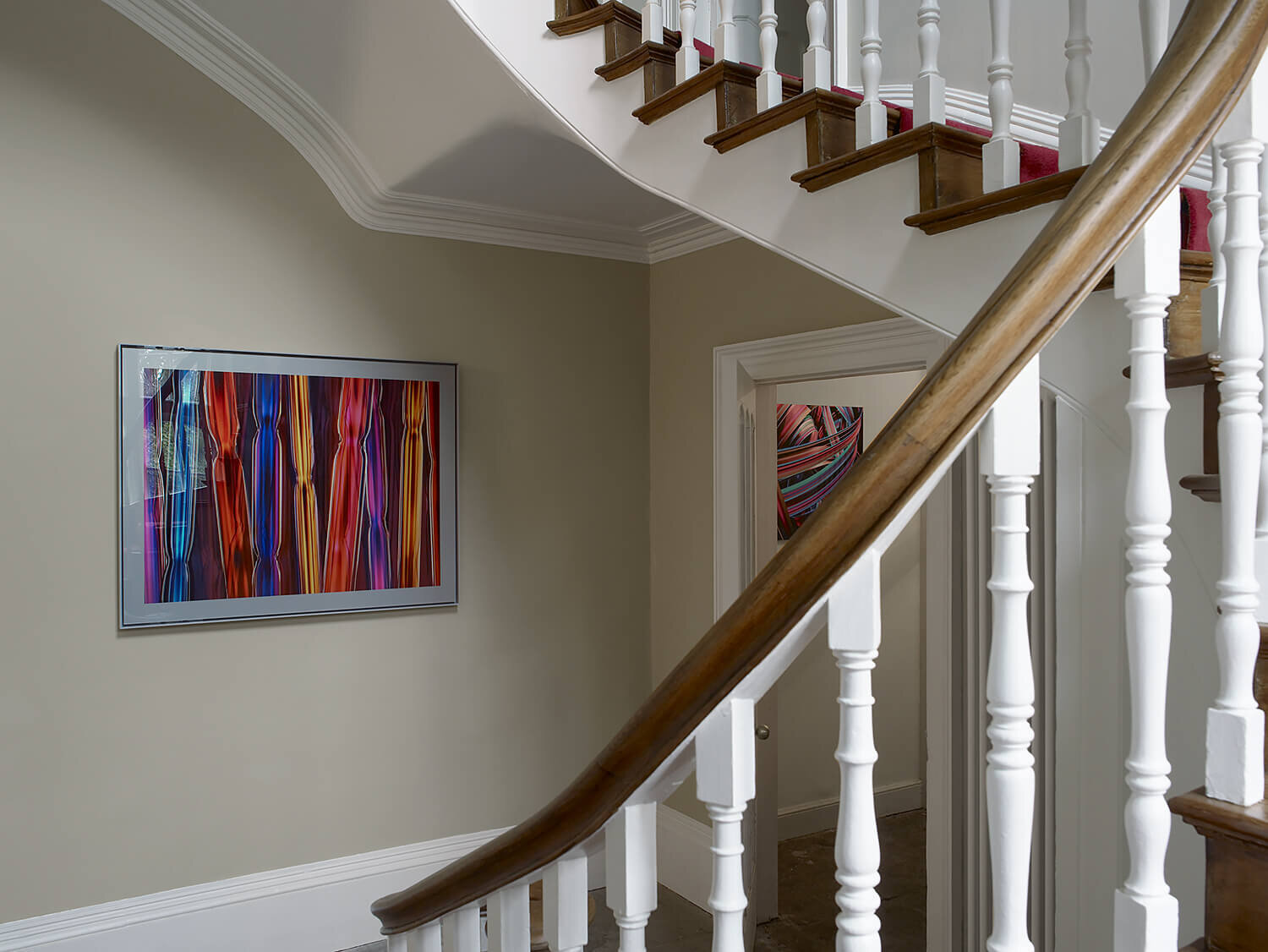About the exhibition
Close House is a beautiful early Georgian villa in Somerset, owned and managed as a home and exhibition space by Freeny Yianni, ex Lisson Gallery.
For Coda at Close we hung around twenty pieces throughout the main reception rooms on the ground floor, as well as a large 2.4m high Torsion piece in the imposing stairwell.
Herman Lelie was bought in to design a catalogue for the exhibition, with text by Matthew Collings and photography by Stephen White.
It was a real treat to see the work hung in such a unique setting, needless to say the combination of a listed building and contemporary digital drawing seemed to be a perfect pairing, at least to my eye.
Freeny continues to present a dynamic programme of events at her project space in Hatch Beauchamp, and online, with a highly convincing curatorial approach. I’d recommend subscribing to her list…
Work in situ
The Chancy Element, in conversation with Matthew Collings
MC I can see the images are computer generated. I respond to the intricacy, rhythms, playfulness, but I’ve no idea what technical processes are involved. I see very beautiful visual relationships, and I imagine from their intensity that creating them involves a high degree of labour, as with any artistic process, and in fact it’s basically drawing...?
CE Yes, every part of the image is hand drawn. You know those animated 3D films, you look at the credits at the end, a list of the names of five thousand people who spent four years drawing everything, and you think, Oh God, look at the sheer volume of work. I think my process has a similarity to that, years of drawing form, shape, geometry and so forth. But you could argue about whether what I do is really drawing or not. Both my brothers are artists. And we have a lively debate all the time. One of them tells me that drawing is always “pencil on paper.”
MC I suppose he’s talking about many things that might go into the notion of drawing, including mythology and history, and so on, a cultural idea and not simply the technical thing. Whereas when you say you’re “drawing” you’re describing what you do for hours and hours, carefully building, refining, repeating, altering and adjusting, which is certainly what drawing usually meant for the majority of artists in the past. I think if your brother is being philosophical without realising it, then you’re a bit philosophical too in your designs. You come up with variations on an idea of symmetry, and the effect of all that serious consideration, those critical revisions, is that every shape has its own particularity but is also contributing to an overall dynamic balance – you’re testing out symmetry’s appeal. I feel the pleasure I’m getting from the work is connected to life, to nature, how the mind organises reality....
.
Link here to read the full interview >
In conversation with Matthew Collings at Close House, Februray 2011






























